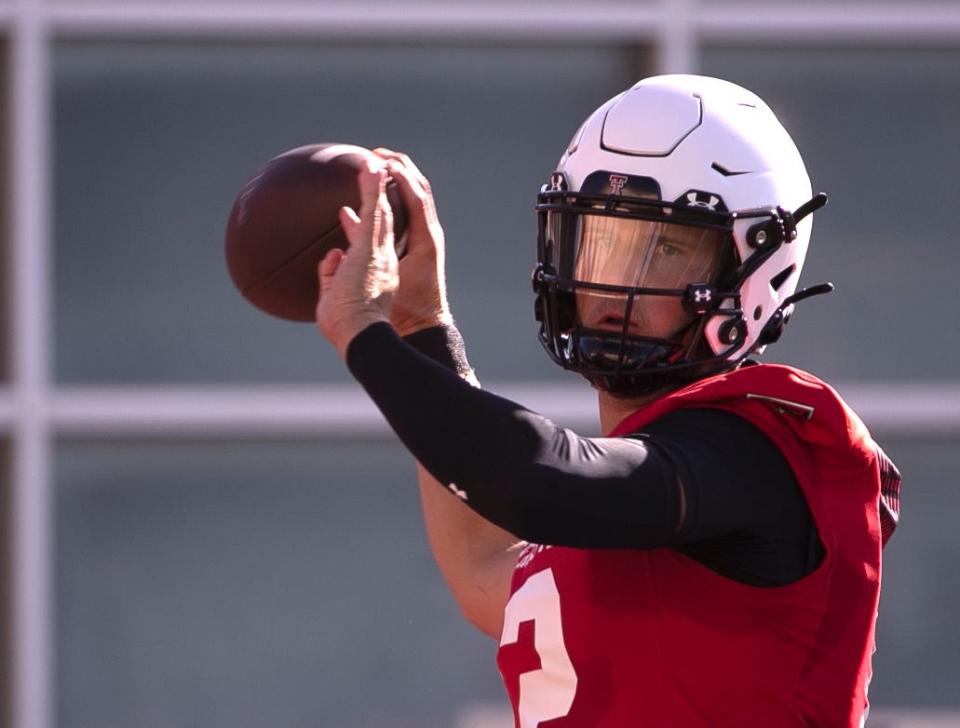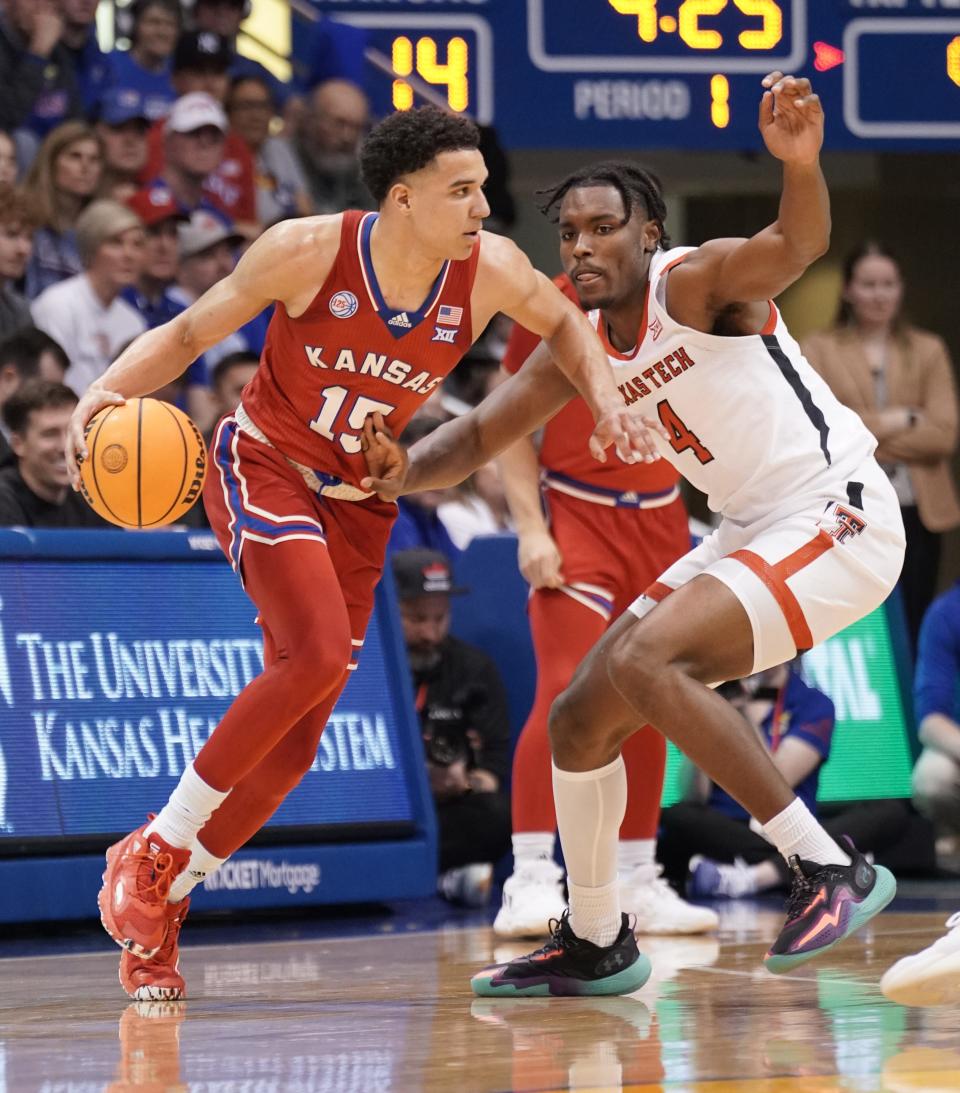Don Williams: Acclaim for its NIL support continues to buoy Texas Tech football program
On the X platform formerly known Twitter, the College Football Blue Bloods posted its ranking Friday of the top NIL programs in the sport, putting the Texas Tech football program in ninth. Not bad, given there were 131 FBS teams last season.
That's consistent with how the Red Raiders are viewed in this new era. Last August, On3Sports ranked a top 20 of what it termed the "most ambitious NIL collectives" and put The Matador Club that supports Texas Tech athletes at No. 8.
Last December, at the Sports Business Journal Intercollegiate Athletics Forum in Las Vegas, Texas Tech athletics director Kirby Hocutt said 277 Tech athletes had made $5.7 million related to their name, image and likeness. CBS Sports reporter Dennis Dodd quoted him on that.
The Matador Club recently signed 120 Red Raiders football players to one-year contracts worth $25,000 each, upping its commitment after the club covered 105 football players last school year.
Everyone on the team gets a baseline amount, but players aren't limited only to their Matador Club deals. In a recent conversation I had with Tyler Shough, the Texas Tech quarterback estimated he'd had about 10 NIL deals since college athletes monetizing their fame was legalized two years ago.

More: Don Williams: Lubbock awaits a Texas Tech football resurgence. Red Raiders want to reward them
More: Don Williams column: Withhold AP Top 25 college football poll for month? That's a bad idea
None of this should come as any surprise. Four years ago, we wrote that if NIL resolutions passed, Texas Tech would be in position to fare well, given the demonstrable history of support for the program. Tech's best recruiting era, under Jim Carlen in the early 1970s, came when fans weren't strictly walled off from having a hand in recruiting.
Rodney Allison, the top quarterback in Texas when he was coming out of Odessa, remembers it well.
"I got thousands of letters from boosters," Allison told me a few years ago. "All these people in this town wrote me unbelievable amounts. My mother's still got them in spiral deals. I bet we've got 10 of them, and there's probably a hundred — I don't know how many — in each one, but it's unbelievable."
Channeling the same spirit, Tech supporters have funded hundreds of millions of dollars in facilities over the past quarter century.
Overwhelmingly, the NIL game and the loosening of transfer restrictions have been a net positive for Tech athletics. When the Wes Kittley-led men's track and field team swept the Big 12 championships this year, the Red Raiders got 82 of their 159 points at the indoor meet and 100 1/2 of their 179 points at the outdoor meet from guys who had transferred from other four-year schools. That's only in individual events, not counting transfer contributors to relays.
NIL money didn't play a big role in Kittley's transfer haul, but it doesn't hurt.
Anecdotally, a good many Tech followers seem staunchly opposed to all college athletes having the one-time transfer exception and NIL opportunities, jealousy being a driving factor. The transfer exception, allowing athletes to change schools once without having to a serve a sit-out year in residence, has liberalized player movement much more than the NCAA transfer portal itself. Athletes in most NCAA sports already had that freedom before it was granted to those in football, men's and women's basketball, men's hockey and baseball.
Local opposition to the transfer exception and NIL opportunities stands at odds with the degree to which Texas Tech has benefited. Few high-impact athletes left Tech during the first two years of the NIL era, basketball players Kevin McCullar Jr. and Terrence Shannon Jr. being exceptions. To the extent dollars played a part, Tech donors made a choice not to match whatever those two received elsewhere, Shannon at Illinois and McCullar at Kansas.

Tech supporters might have lacked the willingness. They weren't lacking the means.
When the Matador Club made its initial teamwide commitment for football, about $2.6 million, skeptics derided it as unsustainable. A baseless assertion given that, between 2011 and July 2022, Tech athletics received more than $414 million in philanthropic giving unrelated to NIL.
That Tech supporters can continue to fund NIL at a high level shouldn't be taken for granted, but history shows it's doable. Funding for the Tech football facilities project currently under way has topped $95 million, and the following were donor-funded:
The Sports Performance Center for $48 million. The Womble Basketball Center for $32.2 million. The Rip Griffin baseball clubhouse expansion for $14.5 million. The Jones AT&T Stadium north end zone project for $11 million. The Whitacre Center for $9.4 million. The Cash Family Nutrition Center for $5.5 million. The Cash Foundation Clubhouse and Cash Family Team Facility at the Rawls Course for $3.9 million.
Once the football endeavor is complete, Tech will be in a good place with its sports facilities. Then the deep-pocketed can focus more on maintaining the Red Raiders' perch in the NIL rankings.
This article originally appeared on Lubbock Avalanche-Journal: Acclaim for NIL support continues to buoy Texas Tech football | Don Williams
